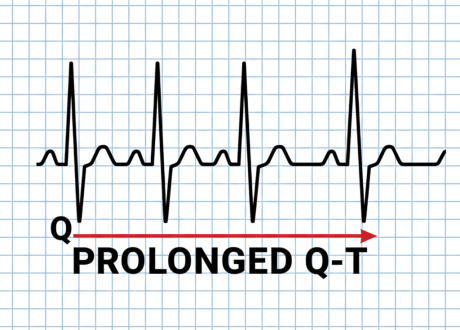Podcast: Play in new window | Download
In this EM Cases main episode podcast, we tackle the complexities of trauma airway management, including direct trauma to the airway. We discuss indications and timing of intubation, penetrating neck trauma, the head injured patient, the agitated patients and the soiled airway. The critical question is: when should we deviate from, delay or modify RSI, and how do we navigate the unique challenges presented by trauma airways and airway trauma? Dr. George Kovacs and Dr. Andrew Petrosoniak answer this and other questions such as: how should we re-sequence the trauma resuscitation depending on immediate life-threats? When is immediate vs delayed intubation recommended? How useful are the Zones of the neck in penetrating neck trauma? What is the optimal dosing of airway medications in the sick trauma patient? How should we modify our airway strategy for the severely head injured patient and/or agitated patient? When should we consider ketamine facilitated fiberoptic intubation in the trauma patient? and many more…
Written Summary and blog post by Sara Brade, edited by Anton Helman November, 2024
Cite this podcast as: Helman, A. Petrosoniak, A. Kovacs, G. Trauma Airway & Airway Trauma. Emergency Medicine Cases. November, 2024. https://emergencymedicinecases.com/trauma-airway. Accessed November 17, 2024
Case study: Penetrating neck trauma
Consider a 25-year-old woman who presents with a stab wound to the anterior neck. She arrives with a heart rate of 145, oxygen saturation at 90%, and audible gurgling sounds, indicating potential airway compromise. This is a high-stakes scenario where every decision, especially regarding airway management, could have life-altering consequences. The injury, located just off the midline in the anterior neck, immediately raises concerns about airway obstruction, major vascular injury, or both.
Re-sequencing the trauma airway: A paradigm shift
While working through the standard ATLS approach of A then B then C can be a helpful memory tool, our trauma resuscitations often require simultaneous assessment and management of all three or a total re-ordering of priorities. Some traumas may require a CAB approach or a CBA approach. Intubation is not always the first priority in trauma and, in fact, it may worsen outcomes if done prior to adequate resuscitation. Instead of focusing on letters, we should be focusing on identifying and managing the most immediate threat to life for each patient. Look for and immediately manage the following:
- Massive hemorrhage: For example, a spurting artery that needs immediate management/compression or an unstable pelvis that needs binding.
- Severe airway compromise:
- Dynamic airway: If you wait even minutes, you may miss the opportunity to secure an airway. For example, expanding neck hematoma.
- Critical hypoxia: Despite maximum noninvasive ventilation, O2 saturation is still <90%.
- Obstructive shock:
- Tension pneumothorax/ hemothorax: Consider bilateral finger thoracostomies/ chest tube before airway management.
- Cardiac tamponade: Very high-risk intubations, should likely be done in the OR if patient still has a BP. If cardiac arrest, consider thoracotomy if your resources allow.
The decision to intubate the trauma patient
The old dogma of “GCS 8 = intubate” oversimplifies the indications for intubation in the trauma patient, and may cause more harm than good. The decision to intubate a trauma patient is a nuanced one and based on multiple data points. Sometimes the need for intubation is obvious and sometimes a confluence of factors over time pushes the decision in one direction or another. Key considerations in this decision include:
- Hemodynamic stability: Resuscitate before you intubate
- Dynamic airway or critical hypoxia: Intubation needs to be prioritized, as above
- Intractable pain: Intubation may be required to manage severe pain (eg. amputation)
- Agitation: In some agitation patients, intubation may be the only way to safely facilitate necessary care (ie. procedures, CT scans)
- Airway protection: If the patient is at risk of aspiration or losing their airway, intubation may be required
Timing of intubation: Early vs. delayed?
There is mixed evidence about the optimal timing of intubation in trauma patients. There is some evidence to suggest prehospital airway management improves outcomes in trauma patients. Conversely, there is evidence to suggest that prehospital intubation increases mortality in trauma patients. Further, there is evidence that trauma patients have better outcomes when intubated in the OR compared to ED. This mixed and even contradictory evidence may be due to the high variability in clinical context. Our experts recommend that the clinical context be the primary consideration, so that the timing of intubation, like the decision to intubate, be considered carefully on a case by case basis.
Clinical Pearl: “A procedure is never going to trump context” – procedures like RSI are not inherently life-saving—what matters is how and when they are used, tailored to the patient’s physiologic state. If there are no immediate indications for intubation, pause to consider if intubation can be delayed until the patient is in the optimal setting.
Airway management in penetrating neck trauma
In patients with direct trauma to the airway, or potential airway trauma, our attention should be primarily focused hard signs and soft signs instead of zones of the neck. Zones of the neck tells us about the entry but nothing about the trajectory/ pathway of the injury. If we base our management solely on the zone where the entry wound is, we will mismanage our patients.
- If there are any hard signs present, the patient needs immediate management in the OR.
- If only soft signs present, we likely have time to image their neck and then make decisions about subsequent management.
| HARD SIGNS | SOFT SIGNS |
| Refractory shock | Transient hypotension |
| Pulsatile/ severe hemorrhage | History of hemorrhage, now resolved |
| Large/ expanding hematoma | Small/ stable hematoma |
| Bruit/ thrill | Dysphagia |
| Stridor/ airway obstruction | Dysphonia |
| Severe subcutaneous emphysema | Odynophagia |
| Bubbling wound | Minor hematemesis |
| Severe hematemesis | Minor hemoptysis |
| Massive hemoptysis | Dyspnea |
| Focal neurological deficit |
Pre-oxyentation in penetrating neck trauma
Use nasal prongs + NRB to oxygenate these patients. Positive pressure ventilation (ie. BVM) should be avoided whenever possible. If necessary, bagging should be slow with low tidal volumes. Raising intrathoracic pressure in patients with decreased preload from hemorrhage can create a pseudo-obstructive shock picture and worsen their clinical status. It can also worsen subcutaneous emphysema and lead to airway compromise.
Warning: avoid positive pressure ventilation whenever possible in patients with penetrating neck trauma
C-spine immobilization in penetrating trauma
C-spine immobilization is generally not recommended for isolated penetrating neck injuries, but it should be considered if concomitant blunt trauma, or in certain rare clinical situations (ie. isolated GSW to the neck with focal deficits suggesting spinal cord injury). The Eastern Association for the Surgery of Trauma (EAST) performed a systematic review of 24 studies in 2018 that showed no benefit to spinal immobilization for penetrating trauma in either mortality or neurologic recovery, even in those with a direct neck injury. In difficult airway situations where maintaining C-spine immobilization is indicated in the blunt trauma patient, but securing the airway is a struggle, some degree of neck movement may be required.
Intubation strategy options in penetrating neck trauma
Airway strategies for these patients can be divided into crash scenarios and scenarios with more time to act.
- In a crash situation, the airway plan will likely be RSI with “double set up”. If intubation from above fails, promptly move to front of neck access (FONA).
- If you have time, call for a more experienced operator and ensure the patient is in the optimal setting (ie. in some situations, that may mean holding off on airway management until OR). Consider:
Clinical Pearl: If the clinical situation allows, let the patient maintain their position of comfort (ie. sitting up).
Clinical Pearl: Soft signs can evolve into hard signs over minutes. Frequent reassessments for the presence of hard signs are important.
Clinical Pearl: In penetrating neck trauma, inspect the back and axilla to identify other injuries that may require immediate treatment (eg stab wound to the upper back causing tension pneumothorax). Get a quick look at these areas early on in your assessment. For example, have the patient lift their arms and sit up when they are being transferred off the EMS stretcher.
Management of the soiled airway in the trauma patient
- Prepare your team and equipment ahead of time.
- Double all your equipment (ie. O2, 2 DeCanto or meconium aspirator suction catheters).
- The SALAD technique can be used for soiled airway intubations.
- Use just enough suction to clear the airway, and no more, because O2 delivered to the airway is also being suctioned out.
- Give the paralytic enough time to work manipulating the airway to decrease the risk of vomiting.
Pearl: in the soiled airway, suction just enough to clear the airway and no more, as further suctioning will remove critical supplemental oxygen from the airway
Airway medications: Optimal dosing in the hemodynamically unstable trauma patient
The classic teaching to give half of the usual induction dose and double the paralytic dose in hemodynamically unstable patients may not lead to better outcomes. There is mixed evidence about dosing induction and paralytic agents for these patients, but there are a few general principles that can help guide our decisions:
- Our patients should be adequately resuscitated before receiving induction medications. If you give a lower-than-normal dose of ketamine to an under-resuscitated patient even if they have pressors running, they may still crash. Pay attention to the shock index and aim for it to be <1 before intubation.
- Remember also that the transition to positive pressure ventilation decreases preload further and can worsen hemodynamics
- Be judicious in dosing the induction agent (our experts recommend this despite limit evidence)
- Consider titrating your induction agent to effect as in a rapid Delayed Sequence Intubation (DSI)
- Our experts also recommend using a high paralytic dose to ensure adequate and timely paralysis
Airway management in head injured patients
The initial management of head injured patients has significant long-term effects that may be overlooked in the ED. Even transient hypotension, hypoxia, and hyperventilation have shown in observational studies to have significant morbidity/ mortality consequences. We may not see the effects of these episodes in the trauma bay, but we have a duty to prevent them whenever possible.
BP targets in head injured trauma patients
In head injured polytrauma patients with other sources of bleeding, you may have competing priorities with respect to BP targets. For the rest of the body, be inclined to tolerate a lower MAP, but for the head injury a higher sBP target is preferred. If the patient is posturing with signs of raised ICP, target a higher sBP. If they have a mid-range GCS, no signs of raised ICP and hemorrhage is the most important clinical priority, be less aggressive with the BP target. Based on current evidence:
- For patients with an isolated head injury, sBP target = 100-140 mmHg.
- For patients with a spinal cord injury, MAP target = 80-85 mmHg.
Key considerations prior to intubating a head injured patient
- Prior to intubation, perform a brief but specific neurologic examination before intubation. This should include pupils, posturing, GCS (include information about the individual components), and lateralizing findings; the brief neuro exam is often overlooked, and once the patient is paralyzed, it’s difficult to assess what their true baseline was – this can profoundly impact both the immediate and long-term decision-making process, especially when neurosurgeons get involved.
- Using waveform capnography while preoxygenating to help assess adequacy of airway seal. It also helps to avoid hypo/hyperventilating.
- Have hypertonic saline available to give if signs of raised ICP
- Consider pre-intubation arterial line for more accurate monitoring. This can allow for responsive titration of induction medications.
- In general, use ketamine (or etomidate if you have access) and rocuronium to intubate these patients; propofol is a reasonable alternative if there is no concomitant hemorrhage and they are hypertensive.
- Consider pre-intubation fentanyl (adult dose 200-300 mcg) to blunt the sympathetic response to intubation, but be ready to act because this may, rarely, cause apnea
- Consider pre-emptive vasopressors; if you anticipate a drop in blood pressure during intubation, having norepinephrine ready and potentially even running before induction.
Post-intubation care is just as important as preparation, if not more. Employ reverse Trendelenburg, head of bed 30 to 40 degrees, hypertonic saline if appropriate, monitor end-tidal CO2 (if blown pupil, target pCO2 between 30-35), and appropriate post-intubation sedation and analgesia (usually propofol and fentanyl) to target BP. Monitor pupils post-intubation for signs of deterioration.
For more on Neuroprotective Intubation check EM Quick Hits 55
Airway in the agitated trauma patient
Management of the agitated trauma patient is closely related to the management of the head injured patient. The main priority is to gain rapid control of the situation as this is a potential safety issue for both the patient and staff. if IV access not available, our experts recommend using IM ketamine (usual adult dose 200-400 mg IM). The next priority is to get IV access, vital signs, and complete a brief examination to assess injuries/ neurologic status. If the patient requires more sedation, consider titrating in more ketamine or midazolam once IV access is established. This upfront sedation allows for a Delayed Sequence Intubation (DSI)-like approach to intubation if required.
Clinical Pearl: Critical hypoxia can present as agitation. To fix the agitation, first fix the critical hypoxia.
For more on Emergency Management of the Agitated Patient check EM Cases Ep 115
Take-home points for airway assessment and management in trauma
- Trauma resuscitation should focus on the most immediate threats to life, sometimes requiring prioritization of circulation, airway, and breathing in a flexible CAB or CBA order. Massive hemorrhage, severe airway compromise and obstructive shock may all demand emergent intervention.
- Decisions around whether to intubation and when to intubate in trauma are complex. Key factors to consider include: hemodynamic stability, dynamic airway, critical hypoxia, intractable pain and agitation. Remember: context trumps procedure.
- In penetrating neck trauma, focus on hard signs versus soft signs rather than just the neck zone to dictate management. If hard signs, this patient needs immediate OR. If soft signs, consider imaging first. Avoid unnecessary positive pressure ventilation to prevent worsening shock and worsening subcutaneous emphysema.
- For the soiled airway in trauma, have large bore suction equipment available. The SALAD technique can help manage soiled airways, but use suction with caution to minimize interruption of O2 delivery to the patient.
- For head injured patients, prevent any hypoxia, hypotension, and hypo/hyperventilation to reduce long-term morbidity and mortality. Remember to select BP target tailored to the most life-threatening clinical problem when head injury occurs in the context of polytrauma. Consider pre-intubation arterial line.
- In agitated trauma patients, prioritize safety with rapid IM sedation (ie. ketamine) if IV access is unavailable, then reassess to determine if intubation is indicated.
- Lower doses of induction agents and higher doses of paralytics may be beneficial in hemodynamically unstable patients. Aim to resuscitate to a shock index of <1 before intubation and titrate induction medications carefully.
- Use end-tidal CO2 throughout the pre-oxegentation, intubation and post-intubation phases to help guide management
The power of humility… Remain humble in airway management. Learning from each experience, whether it’s a success or a challenge, can continuously improve practice. Seeking help or guidance from peers is not a sign of weakness but a step towards ensuring the best possible patient outcomes.









